#desert culture
Text



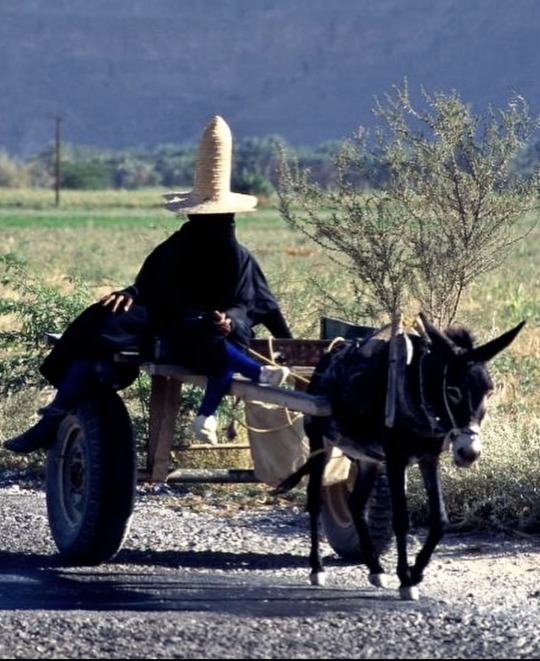


The female goat herders of Hadhramaut, Yemen
Goat herding is traditionally done by females in Eastern Yemen. The women cover all their skin from the heat and sun, protecting themselves from dehydration and skin damage, the socks and gloves keep their hands and feet soft despite the unforgiving desert sun. The hat (made from dried palm leaves) besides being a drip by itself serves an important role, it insulates air on top of their head thus keeping it cool, besides providing the obvious shade. The layered clothing also helps with the desert changing mood, where it can shift from hot days to cold nights.
#hardhramout#yemen#aesthetic#goats#animals#culture#goat herding#women#desert#farmcore#interesting#working women#fashion#style#people#people of the world
11K notes
·
View notes
Note
Hi detective
I'm doing blorbo Friday, so what food preferences your blobos get from you, and what do they not?
This is a great question, but I feel like I'm going to have to give a super boring answer.
I am SUCH a picky eater that I think if I based any of my characters food preferences off me it would get very irritating for a reader lol.
I think the closest I can get is that, off the top of my head, I can't think of any characters who are vegetarian or vegan. Which is probably an unconscious bias on my part because I can, personally, imagine a meal without a meat as sustantial portion.
They Fey of Arbaon are used to fresh and unprocessed foods, and their diet is probably more primarily fruits and vegetables, with smaller amounts of meat, but they'll still eat most things.
As for Stella and Reilly in the Stolen Stories, they'll both eat anything. They've both been starving too many times to be picky about their food.
This has given me idea's for some of the other characters though, in book three. The setting is a desert, so I'm thinking about the cuisine in that part of Moryann now, so thank you :D
Disclaimer: Answered August 10th. Scheduled for September 5th
#Asks#Asks Answered#Sleepy#Sleepyowlwrites#Writeblr#Writeblr Community#Writing#Writing Community#Food#Fey Touched Trilogy#Stolen Stories#Fantasy#Fantasy Food#Fey#Elves#Desert Culture#Pad-Cedae
1 note
·
View note
Text
Jaisalmer Tour Packages
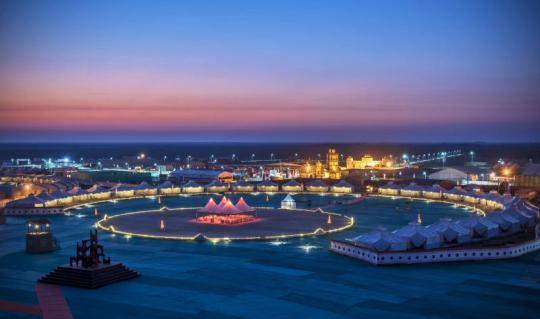
With one of our carefully planned vacation packages, you may investigate the hypnotic attraction of Jaisalmer, sometimes known as the "Golden City" of India. Jaisalmer, which is located in the middle of the Thar Desert, is a city that has a long and illustrious history, as well as stunning architecture and a thriving culture. Allow us to guide you around the golden sands and magnificent structures that make up this mesmerizing location.
The Heritage Marvels Collection
With the help of our Heritage Marvels Jaisalmer Tour Packages, you may learn about the city of Jaisalmer's rich architectural past. Visit the majestic Jaisalmer Fort, which is listed as a UNESCO World Heritage Site, and allow yourself to be amazed by the intricate sculptures and breathtaking panoramic vistas it offers. Stroll through the winding alleyways of the Old City, where every nook and cranny conceals a story from the city's illustrious history. Pay a visit to the exquisitely embellished Patwon Ki Haveli and Salim Singh Ki Haveli, and you will be able to experience the splendid craftsmanship that echoes through time.
Package Deal for Desert Experiences
Utilize our Desert Adventures Package to set off on an experience that will live long in the memory. As you make your way across the undulating sand dunes of the Thar Desert, you will have the opportunity to go on a camel safari. As the sun begins to set, let yourself to be enchanted by the golden tones that cover the countryside. Around the campfire, under the illuminated sky, you can listen to and dance to traditional Rajasthani music and dance. This excursion will provide you with a genuine desert experience that will remain ingrained in your mind for a very long time.
An Assortment of Cultural Delights
With our Cultural Delights Package, you will be able to completely submerge yourself in the rich culture of Jaisalmer. Be sure to check out the vibrant bazaars, where local artists showcase their intricately crafted wares. Take part in traditional Rajasthani cooking courses and experience the flavors of real cuisine as you learn the art of Rajasthani cuisine. Participate in the life of the community in which you find yourself and educate yourself on its traditions and practices. This package provides an enlightening and immersive experience into the culture of Jaisalmer, which will strengthen your relationship to the city.
Package Deal for the Royal Retreat
With our Royal Retreat Package, you may live like a king for a while. Staying in one of India's many gorgeous heritage hotels or palaces would allow you to get a taste of the Maharajas' extravagant way of life. As you wander around the splendid interiors that are decked out in exquisite furnishings, you will find yourself immersed in the tales of bygone times. Indulge in sumptuous meals befitting kings and queens, and let the calming effects of restorative spa treatments work their magic on your mind, body, and spirit.
Personalized Boxes and Bundles
Utilize our Customized Packages to create the perfect itinerary for your time in Jaisalmer. We create a customized schedule that caters to your interests, whether you're interested in history, nature, or seeking out spiritual experiences, and we make sure that it meets all of your requirements. If you provide us with your preferences, we will design a trip that is tailored to your interests and reflects your tastes.
The final word
The golden sands, exquisite architecture, and lively culture of Jaisalmer are just some of the reasons why you should visit this city, and the tour packages that we provide are designed to help you explore all of its features. Give us the opportunity to show you around this hidden treasure in the desert, and we will make sure that your trip is full of unique experiences and cherished memories. If you choose one of our Jaisalmer tour packages, you will embark on an unforgettable journey that will leave you mesmerized by the allure of the "Golden City."
#meotrips#jaisalmer tour packages#jaisalmertrip#desert#desert culture#camp#camping#hiking#naturalis#sunbathing#camelsafari#jeepsafari
0 notes
Text


Bādgir/ Iran's ancient windcatcher/ Iran
#iran#middle east#persian#iranian#persia#farsi#culture#architecture#nature#art#badgir#yazd#kerman#bushehr#kashan#information#desert#hot weather
3K notes
·
View notes
Note
What if a Crown shared the same cultural aspect of using a scarf to hide their face like Tûjo, would there be problems for the Crown hiding their face or no one would care?
There have actually been a few Crowns in the past who originated from Şevan and who have worn full face-covering scarves without issue. The most important part is that their eyes are always visible to indicate their status. There have been portraits made of their faces as well!!
I haven't really gotten into this in detail in the story yet, but I figure I may as well lore dump a bit now to explain how it all works.
The cultural aspect about wearing the body and face-covers (you can't wear one without the other, it's always fully covered or not at all) has to do with a tradition in Şevan regarding magic. They believe that the idle magic in the air differs depending on where you are and who you're with, and has significant influence on a person's internal magic core in turn (this is regardless of whether the person in question is an inner magic type or not). So, when you're at home or with your loved ones, they believe that you are connected to the magic in your home/from your loved ones, and absorb it to make it part of yourself.
When people from Şevan (who adhere to this belief, mind you--not everyone in Şevan does) venture outside of their homes or away from their loved ones, they cover themselves completely in order to ward off external influences and maintain that essence of their home/loved ones to carry it with them; they believe it makes their magic stronger, and also helps them feel less homesick. To what extent/how rigorously someone adheres to this, however, depends per region/subculture and what they define as their home.
Some are very strict, to where they only ever uncover themselves completely in their physical house, and others (like Tûjo) are much more flexible, walking uncovered in their hometowns/places they frequent, and only covering up when they go somewhere new. Similarly, like Tûjo, a person could grow to consider a new place home or find new loved ones they care about, in which case they can decide to uncover themselves as well.
So, in short, no issues for a Crown on that front!
#ask#turista885xd#worldbuilding#there's also practical and environmental reasons#re: living in or close to a desert makes it useful#but along the way this cultural belief about the clothing also developed as people began to learn more about how magic works
169 notes
·
View notes
Photo

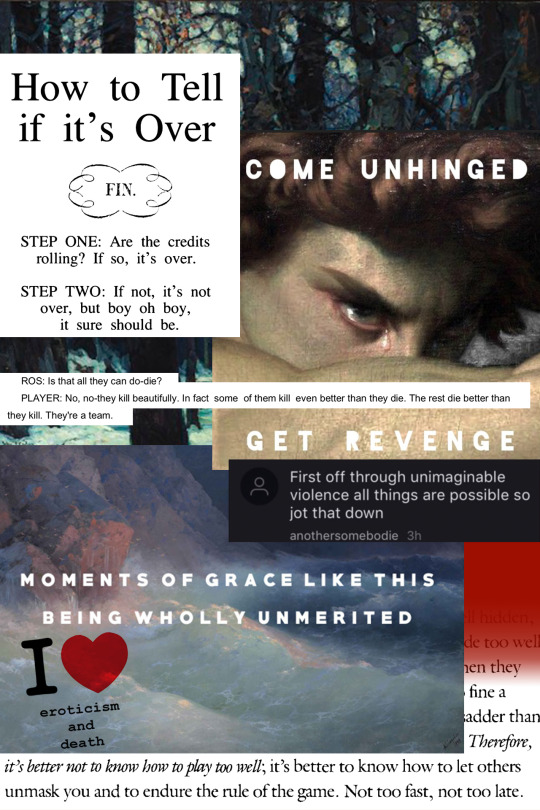
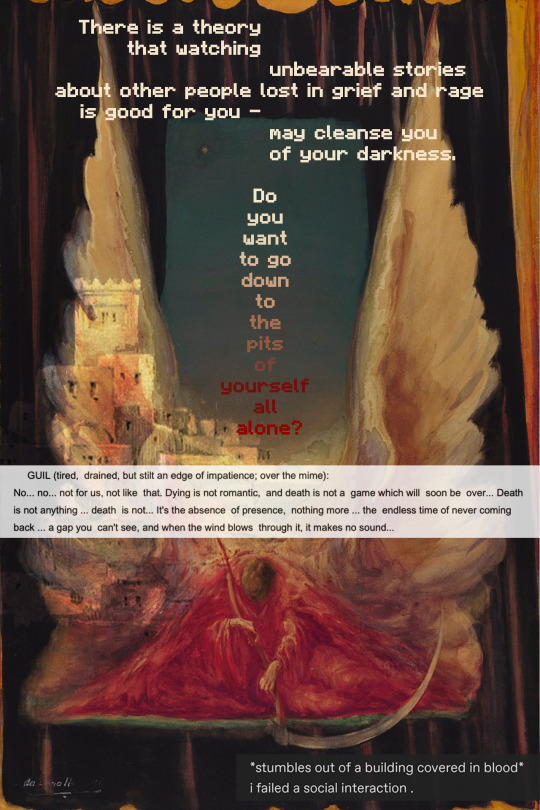
3rd Life SMP Webweave // sources under readmore
Pt. 1: thatsbelievable // Cliffs of the Upper Colorado River, Wyoming Territory / Thomas Moran // Caernarvon Castle / George Elbert Burr // Study for "Science Instructing Industry" / Kenyon Cox // mr_froodo // The Beheading of St. John Baptist / Fortunato Duranti // Wolf in White Van / John Darnielle // Slow Dance / Ron Hicks // Ancient Castle / Georgette Agutte // screenshotsofdespair
Pt 2: Brooding Silence / John Carlson // thatsbelievable // a-doctor-not-a-fangirl // Rosencrantz and Guildenstern Are Dead / Tom Stoppard // Tiktok comment by anothersomebodie // mountainqoats // stigmate // Suite Vénitienne / Sophie Calle & Jean Baudrillard
Pt. 3: Grief Lessons: Four Plays by Euripides / Anne Carson // Rosencrantz and Guildenstern Are Dead / Tom Stoppard // God's Idea / Da Loria Norman // Tangiers / Arnold William Brunner // molabuddy
#third life smp#third life series#life series#grian#desert duo#3lsmp#webweave#web weave#salem tag#my art#life smp#yall do not want to know how long it takes to source a bunch of random things you have saved to your phone#i didnt have to! half of them were from CC0 licensed things#anyways the 3rd panel is probs my fave#if anyone has opinions let me hear em bc i havent rly done this before#or if im violating some rule of webweave culture or something
2K notes
·
View notes
Text
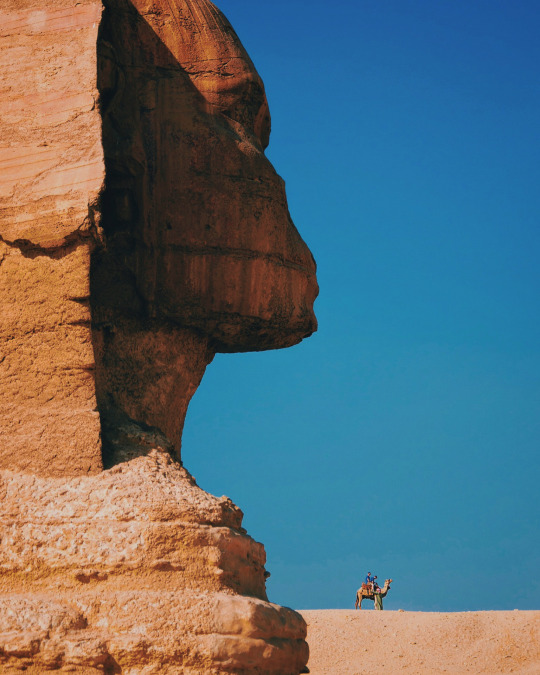
Beautiful morning 🌻
Cairo, Egypt 🌿
#يوميات بنت إسمها ش#egypt#مصر#photography#thisisegypt#art#masterpiece#cairo#shaimaa fekry#history#heritage#culture#sphinx#desert#landscape#travel#ancient egypt#ancient
123 notes
·
View notes
Text
Trafficblr culture is having a crush on ddvau Hotguy
#trafficblr#trafficblr culture is#secret life#double life#limited life#3rd life#last life#goodtimeswithscar#ddvau#desert duo vigilante au
175 notes
·
View notes
Text
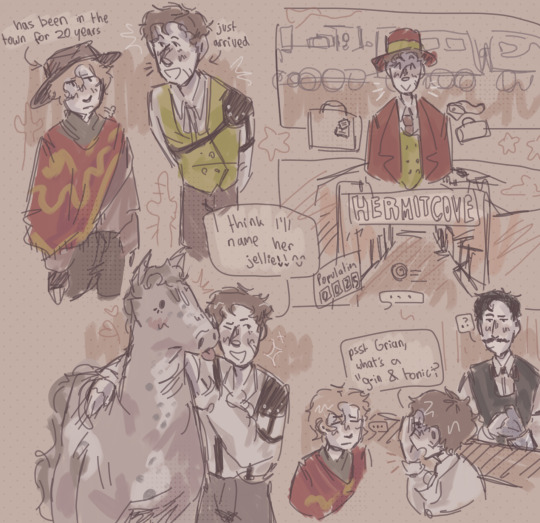
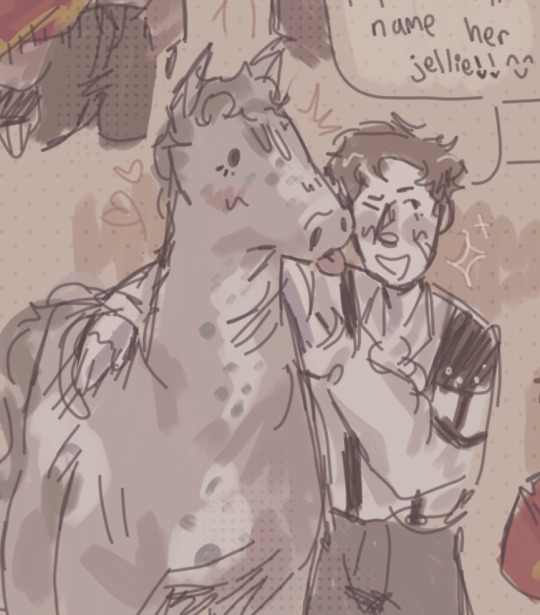

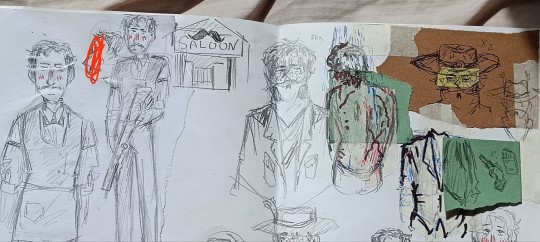
cowboy au that ive been working on yah
#hermitblr#hermitcraft#fanart#mcyt#my art#mumbo jumbo#grian#grianmc#mumbo jumbo fanart#grian fanart#desert duo#mcytblr#cowboy#cowboy au#hermitcraft cowboy au#goodtimeswithscar#gtwscar#goodtimeswithscar fanart#horsies#western culture
834 notes
·
View notes
Text
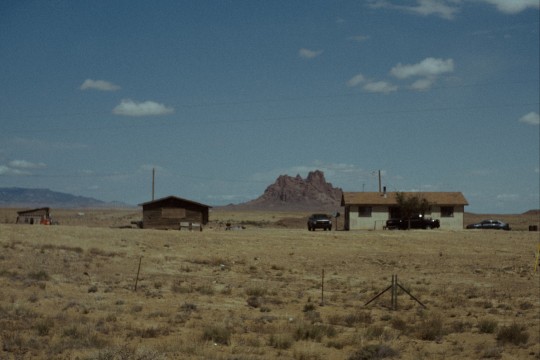

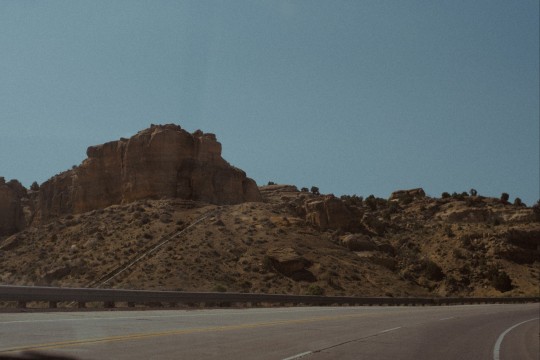
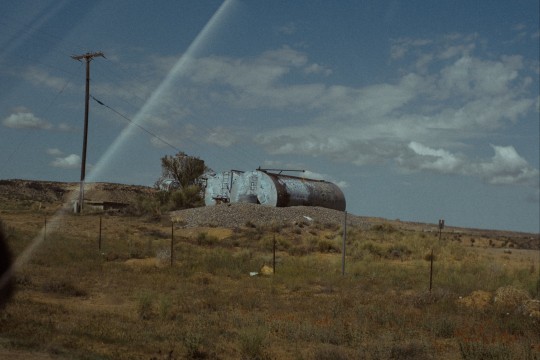


The desert can make you feel so alone
#new mexico#southwest#photography#travel#aesthetic#adventure#desert#art#Gallup#farmington#navajo#navajo nation#cowboy#cowboy aesthetic#cowboy culture#western#old west#wild west#americana#desert aesthetic#night vale#weird west#road trip#road travel#road less traveled
369 notes
·
View notes
Note
Do kyhuine have a clothing item that is as significant as the maanuls hats?
context: eastern maanul hats are mentioned here
Yes, kyhuines have ridiculous headpieces that can rival if not "win" against eastern maanul hats, while id like to dedicate posts for each region I can still show the biggest one, which I will probably make a whole post about them soon since the art is done.
a headpiece from the salt rock kyhuines/salt desert region, usually worn by males during some very special ceremonies. they're not an everyday hats to wear.

The eastern maanul's hat holding so much significance socially is quite exclusive to them among's maanuls, while hats are a universal piece of clothing to make none of them can rival eastern hats being so heavy and over the top with jewels. While other maanuls like the west who have hats inspired by the east are toned down+ hat makers like the ones in the eats who can work with shells are quite rare outside of east regions.
other regions of kyhuines also got special headware too, but they're not as big as the salt desert people's. like maanuls some will be for religious purposes, others more of a fashion thing to wear, and so on
bonuses

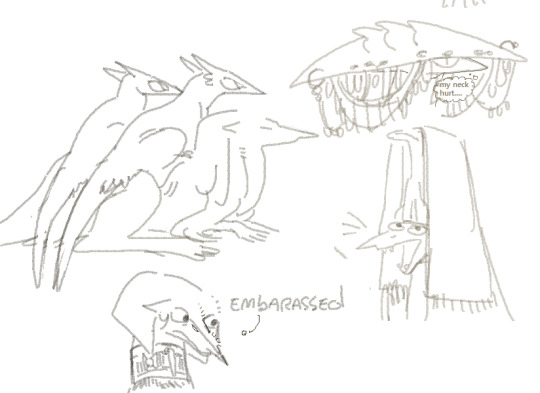
#textile#kyhuine#culture#salt desert#altuyur#ask#digital art#my art#oc#artists on tumblr#worldbuilding#speculative zoology#kaasim#clothing#partly ms paint#partly FA#xenobiology#2023
352 notes
·
View notes
Text
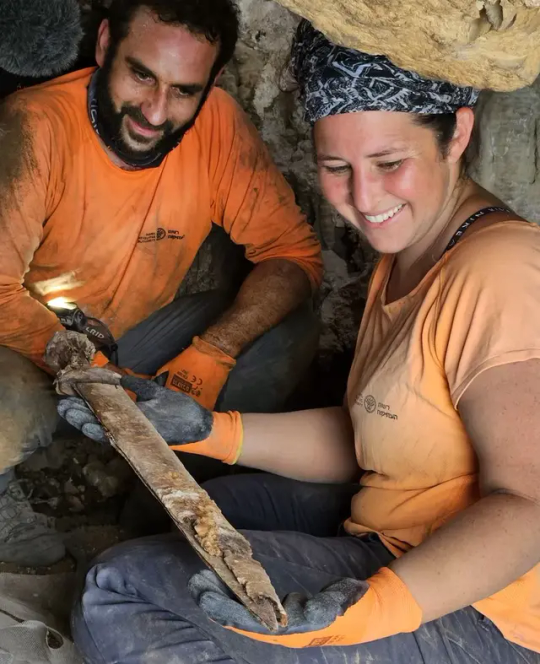

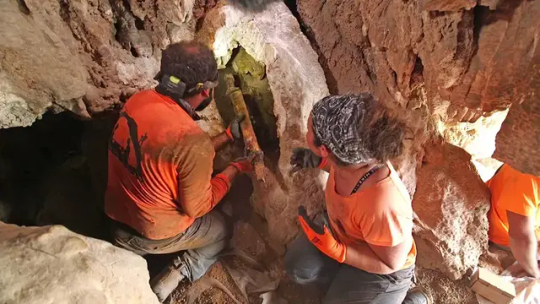
Four 1,900-Year-Old Roman Swords Found in a Judean Desert Cave
Apparently stolen by Jewish rebels, the incredibly well-preserved weapons are ‘an extremely rare find, the likes of which have never been found in Israel’
Archaeologists have discovered four 1,900-year-old Roman swords in a cave in the Judean Desert, which experts believe were captured by the Judean rebels during the Bar Kochba revolt and placed in a narrow crevice in the rock.
“We’re talking about an extremely rare find, the likes of which have never been found in Israel,” Dr. Eitan Klein, one of the directors of the Israel Antiquities Authority’s Judean Desert Survey, said in a video accompanying the announcement of the discovery. “Four swords amazingly preserved, including the fine condition of the metal, the handles, and the scabbards.”
The preliminary article on the swords is published in the volume “New Studies in the Archaeology of the Judean Desert: Collected Papers,” which explores new archaeological finds discovered in the Judean Desert Survey Project. A conference launching the book is taking place Wednesday in Jerusalem.
The four swords were discovered shoved into a small fissure in a cave near Ein Gedi National Park, near the Dead Sea. The cave is already well-known to archaeologists, as it contains a stalactite with a fragmentary ink inscription written in ancient Hebrew script characteristic of the First Temple period.
Recently, Dr. Asaf Gayer of Ariel University, geologist Boaz Langford of Hebrew University, and Israel Antiquities Authority photographer Shai Halevi returned to the cave to photograph the stalactite with multispectral photography, which can decipher additional parts of the inscription not visible to the naked eye. While inside the cave, Gayer spotted an extremely well-preserved Roman pilum — a shafted weapon — in a deep, narrow crack in the rock. He also found pieces of carved wood in an adjacent niche that turned out to be parts of the swords’ scabbards.
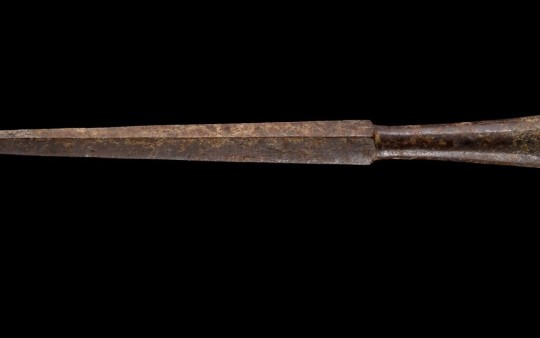
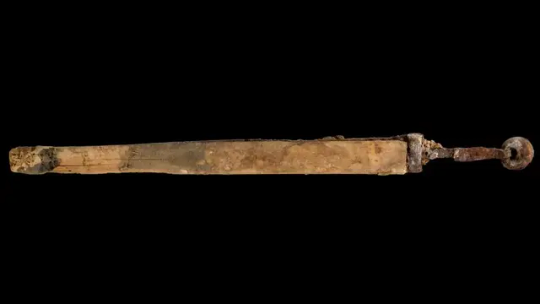



The researchers reported the find to the Israel Antiquities Authority and returned to the site with the Judean Desert Archaeological Survey Team, which is conducting a multi-year comprehensive survey of more than 800 caves in the Judean Desert to find and preserve archaeological remains before they are looted.
It was then that they discovered the four swords, three of which were found with the blades still inside their scabbards. Researchers also found ornate handles made of wood and metal with leather strips nearby. The arid climate in the Judean Desert helps preserve fragile artifacts that might otherwise be lost to the ravages of time, including materials such as leather and wood, which are rarely found in wetter parts of the country.
Three of the swords are Roman spatha swords, with blades 60 to 65 centimeters (23.5 to 25.5 inches) long. The fourth weapon, a ring-pommel sword, is shorter, with a 45-centimeter (18-inch) blade. The swords likely belonged to Roman soldiers and were stolen by Judean rebels who hid them in a cave either for later use or to avoid being caught with them.
“The blades have been preserved so well, they look like they could be picked up and used right now, even 2,000 years after they were forged,” said Langford. “You just realize that you are touching history, because here you are touching a find whose story you know.”
The Bar Kochba revolt, from 132 to 135 CE, also called the Second Jewish Revolt, was a Jewish rebellion against Roman rule in Judea led by rebel leader Simon Bar Kochba. Archaeologists believe the swords were likely hidden in the crevices inside the cave sometime during the revolt, as it was dangerous for Jews to be found with Roman weapons.
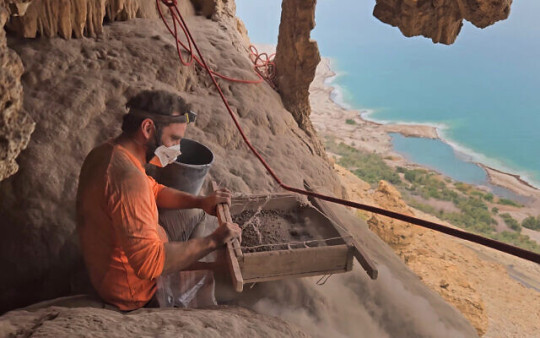
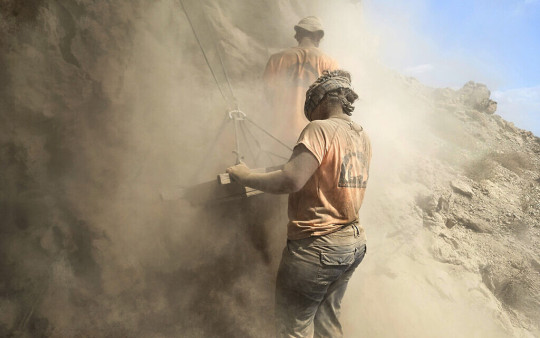
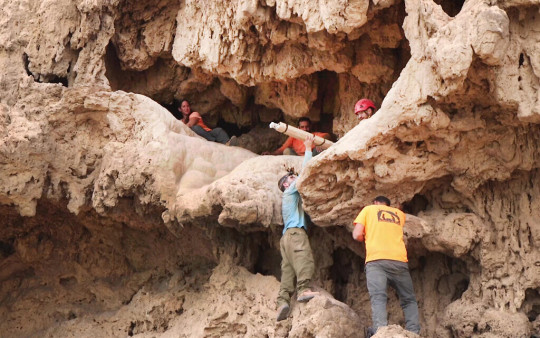
“This is a very rare and unique find on an international level that will shed light on the last moments of the war between the Jewish rebels and the Roman army at the time of the Bar Kochba revolt,” said Klein.
‘A unique time capsule’
The cave survey is being undertaken by the IAA in cooperation with the Archaeology Department of the Civil Administration in Judea and Samaria, and has been funded in part by the Ministry of Jerusalem Affairs and Heritage. Each body allocated about a third of the project budget.
Earlier this year, archaeologists carrying out the Judean Desert cave surveys discovered a rare half-shekel coin minted by the Bar Kochba underground economy.
The cave survey started in 2017 and helped archaeologists discover at least 20 new caves they had not previously known. In 2021, archaeologists announced that one of the caves contained previously undiscovered fragments of the Dead Sea Scrolls, some 60 years after the last pieces of the Dead Sea Scrolls were discovered.

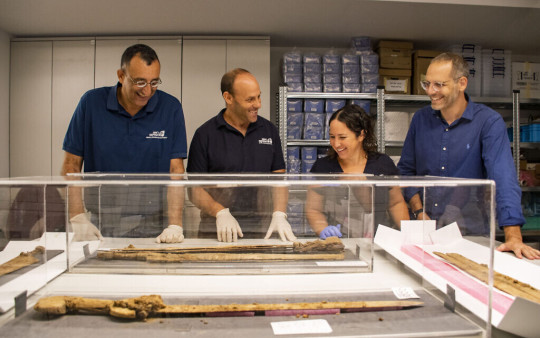
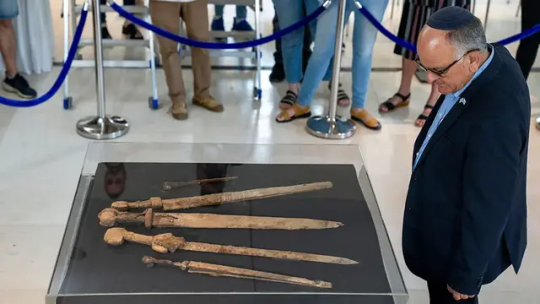
Following the discovery of the swords, archaeologists carried out an extensive excavation of the cave, discovering artifacts from the Chalcolithic period (around 6,000 years ago) and the Roman period (around 2,000 years ago). At the entrance to the cave, researchers found a Bar Kochba bronze coin from the time of the revolt that could help pinpoint the dates when the weapons were hidden.
“This is a dramatic and exciting discovery, touching on a specific moment in time,” said Eli Escusido, director of the Israel Antiquities Authority.
Noting that not all are aware that the dry climatic conditions in the Judean Desert enable the preservation of artifacts that do not survive in other parts of the country, Escusido called the area a “unique time capsule” where it is possible to find “fragments of scrolls, coins from the Jewish Revolt, leather sandals — and now even swords in their scabbards, sharp as if they had only just been hidden away today.”
By Melanie Lidman.
#Four 1900-Year-Old Roman Swords Found in a Judean Desert Cave#Ein Gedi National Park#Judean Desert Survey#Dead Sea#Bar Kochba revolt#roman swords#roman weapons#ancient artifacts#archeology#archeolgst#history#history news#ancient history#ancient culture#ancient civilizations#roman history#roman empire#ancient Israel#Israel history#long reads
349 notes
·
View notes
Photo

Charlotte, New Mexico, 1986. Albert Watson, b. 1942. Pigment print.
#Black and White#photography#photographie#foto#albert watson#1980s#desert#new mexico#hats#fashion#pop culture
924 notes
·
View notes
Text
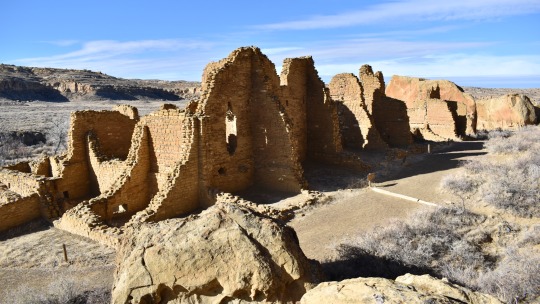

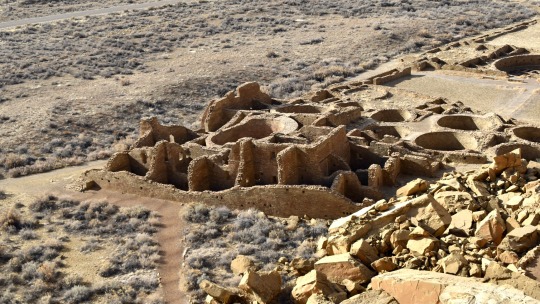
#chaco culture national historical park#chaco canyon#archaeology#anthropology#history#Indians#american indians#native Americans#anasazi#Chaco#ancestral puebloans#adventure#travel#my photo#southwest#desert#new mexico
219 notes
·
View notes
Text
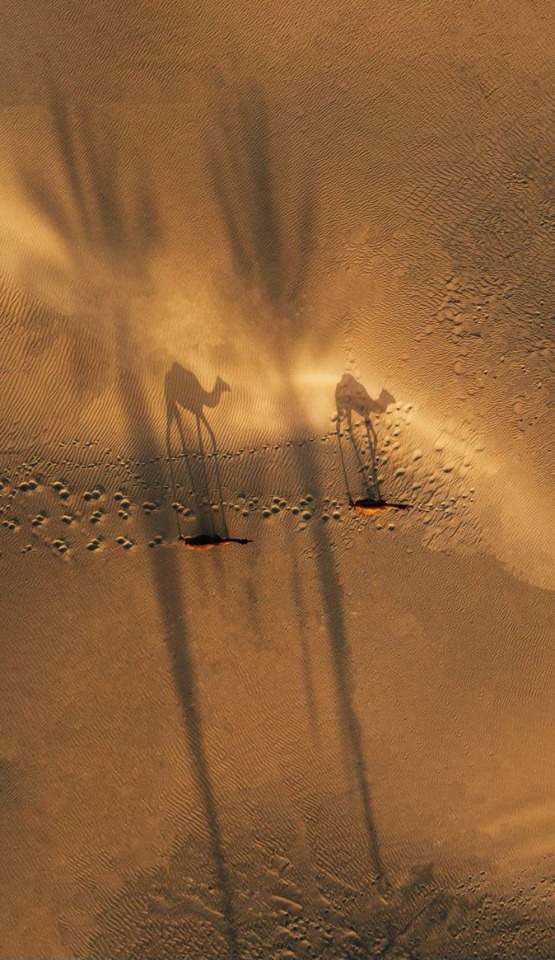
Dark village/ Sistani & Baluchestan/ Iran
Photography: Majid zahedi
#iran#middle east#iranian#persian#persia#farsi#art#culture#nature#camel#sistan and balochestan#desert#summer#iran nature
1K notes
·
View notes
Text
watching the Ancient Aliens episode of Buzzfeed Unsolved and pausing every two minutes to rant once they get to the Pyramids of Giza part bc I was one of those Egyptology kids and I will NOT stand for this fucking SLANDER
#''oh how did they align the pyramids with Orion's belt?'' THEY LOOKED AT THE SKY#navigation via stars was SO crucial in desert areas they were HUGE stargazers#I mean there's a reason a lot of stars have Arabic names#bc Arabic people named them using them to navigate#''how are they so well-preserved?'' it's a fucking DESERT#''they align with magnetic north'' MAGNETS EXIST IN NATURE#''the shapes are perfect'' MATH IS MATH. GEOMETRY IS GEOMETRY.#btw the first two ''examples'' in the video are also bullshit#but they aren't on a subject I read extensively about as a smol#and also Ryan didn't disrespect those cultures quite as much as the Ancient Egyptians#so I didn't have quite as strong reactions to it#anyways Shane is so based in that episode and Ryan is the wrongest he's ever been#the roommate and I kept ranting about how Wrong Ryan is being#Ghoul Boys#Buzzfeed Unsolved#speecher speaks
96 notes
·
View notes